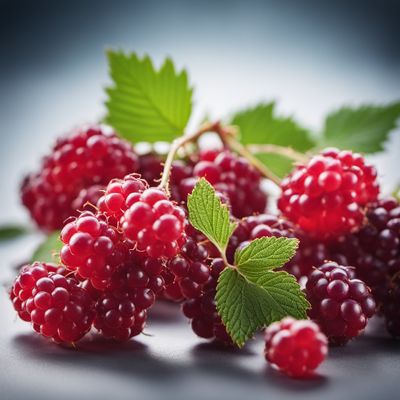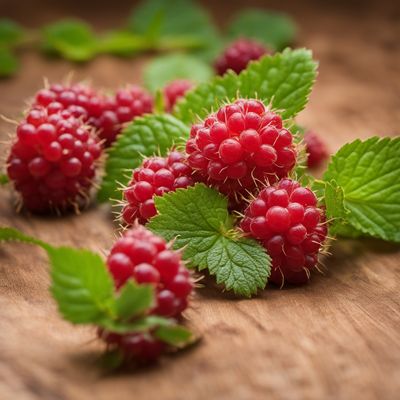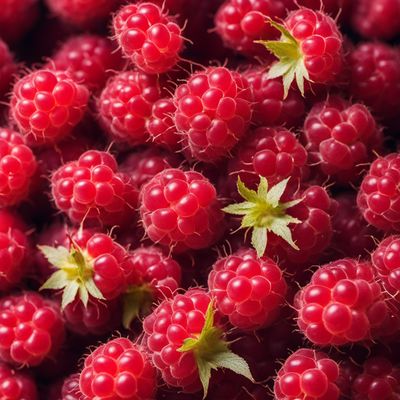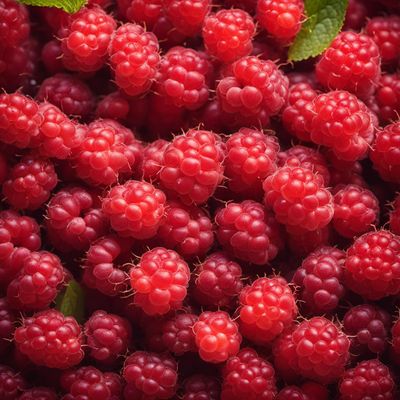
Ingredient
Dewberries
The Wild Berry Treasure: Dewberries
Dewberries are small, dark purple berries that grow on low-lying vines in temperate regions. They have a sweet and tangy flavor, similar to blackberries, with a slightly more delicate texture. These wild berries are often foraged and used in pies, cobblers, preserves, and other berry-centric recipes.
Origins and history
Dewberries are native to North America and Europe, where they grow in the wild in forests, meadows, and along hedgerows. They have a long history of being gathered by foragers and used in traditional recipes. Today, dewberries continue to be cherished for their unique flavor and are a favorite among berry enthusiasts.
Nutritional information
Dewberries are a good source of dietary fiber, antioxidants, and vitamins C and K. They are also low in calories and fat, making them a healthy addition to a balanced diet.
Allergens
Dewberries are not known to be allergenic. However, individuals with berry allergies should exercise caution and consult with a healthcare professional if they have any concerns.
How to select
When selecting dewberries, look for plump and firm berries with a deep purple color. Avoid berries that are overly soft, moldy, or have signs of damage. It is best to pick or purchase dewberries when they are fully ripe for optimal flavor and sweetness.
Storage recommendations
To maintain the freshness of dewberries, store them in the refrigerator in a breathable container or a paper towel-lined tray. Avoid washing the berries until just before use to prevent premature spoilage. Consume them within a few days of purchase or harvest for the best flavor and texture.
How to produce
Dewberries can be found growing in the wild, making them accessible to foragers. They thrive in well-drained soil and prefer sunny or partially shaded areas. Amateur gardeners can try growing dewberries by planting them in suitable outdoor spaces or containers, ensuring they receive adequate sunlight and water.
Preparation tips
Dewberries can be enjoyed in various ways, such as in pies, cobblers, jams, jellies, or as a topping for desserts like ice cream or yogurt. They can also be blended into smoothies or used to infuse flavor into beverages like lemonade or cocktails.
Substitutions
Blackberries or raspberries can be used as suitable substitutes for dewberries. They offer a similar sweet-tart flavor and can be used interchangeably in most recipes.
Culinary uses
Dewberries are commonly used in desserts like pies, cobblers, and jams. They are also enjoyed fresh as a snack or used to infuse flavor into beverages. Their versatility allows them to be incorporated into a wide range of sweet creations.
Availability
Dewberries are commonly found in North America, particularly in regions with suitable growing conditions such as the southern United States and parts of Canada. They can also be found in certain European countries, including the United Kingdom and Germany.
More ingredients from this category

Youngberries
The Sweet and Tangy Delight

Other species and hybrids of genus Rubus, not elsewhere mentioned
The Berry Bonanza

Olallieberries
The Luscious Berry: Olallieberries

Tayberries
The Tangy Delight

Thimbleberries
The Delicate Delight: Exploring the World of Thimbleberries

Salmonberries
The Jewel of the Forest

Loganberries
The Luscious Loganberry

Boysenberries
The Alluring Berry: Boysenberries